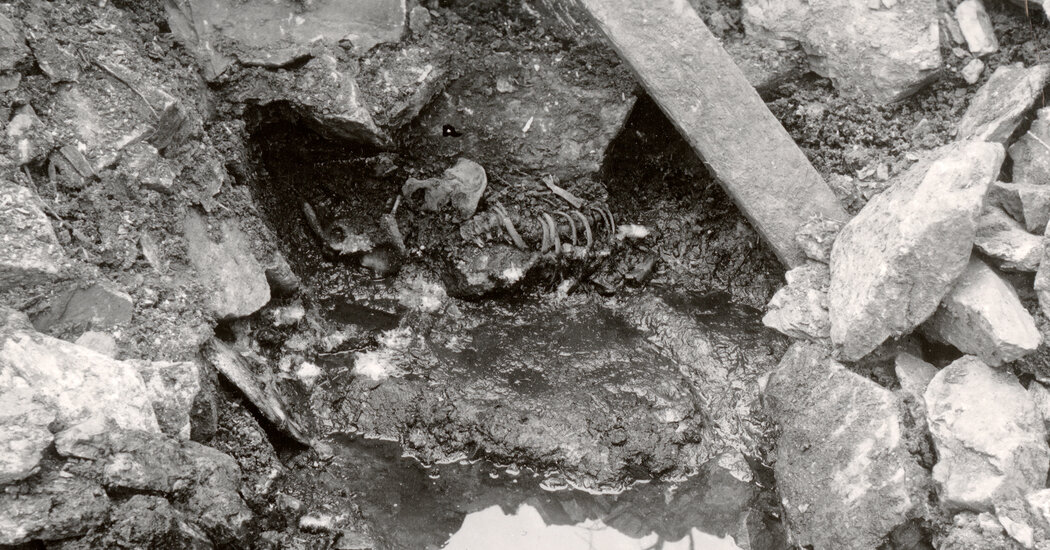Archaeologists in Norway have confirmed that an ancient set of human remains known as the Well Man were intended to make the locals unwell.
In the dying days of the 12th century, with Norway in the grip of civil wars, the Baglers, a faction aligned with the archbishop, laid siege to Sverresborg, the castle stronghold of King Sverre Sigurdsson. The monarch was away, so the besiegers pillaged the castle, burned down houses and poisoned the water supply by heaving the corpse of one of the king’s men headfirst down the well and filling the shaft with stones.
This early biological warfare is recorded in “Sverris Saga,” a contemporaneous biography of the king, who reigned over much of Norway from 1184 to 1202. Scholars have long debated the chronicle’s reliability as a historical document, but a study published Friday in the journal iScience recounts how researchers unearthed the body of the “Well Man” and, with the help of ancient DNA, have provided fresh details about who he was.
“This is the first time that the remains of a person or character described in a Norse saga has been positively identified,” said Michael D. Martin, an evolutionary genomicist at the museum of the Norwegian University of Science and Technology. “It is also the oldest case in which we have retrieved the complete genome sequence from a specific person mentioned in a medieval text.”
The Well Man was little more than a mythical fall guy until 1938, when archaeologists excavated an abandoned well in the ruins of Sverresborg, outside Trondheim in central Norway. At the bottom of the layers of dumped stone, some 21 feet down, they found well-intact human remains. But researchers lacked the technology to do more than just a visual survey.
“There are no records of the dig apart from one photograph,” said Anna Petersén, an archaeologist with the Norwegian Institute for Cultural Heritage Research in Oslo. “There are no date books, no journals, nothing. But the Well Man was there.”
